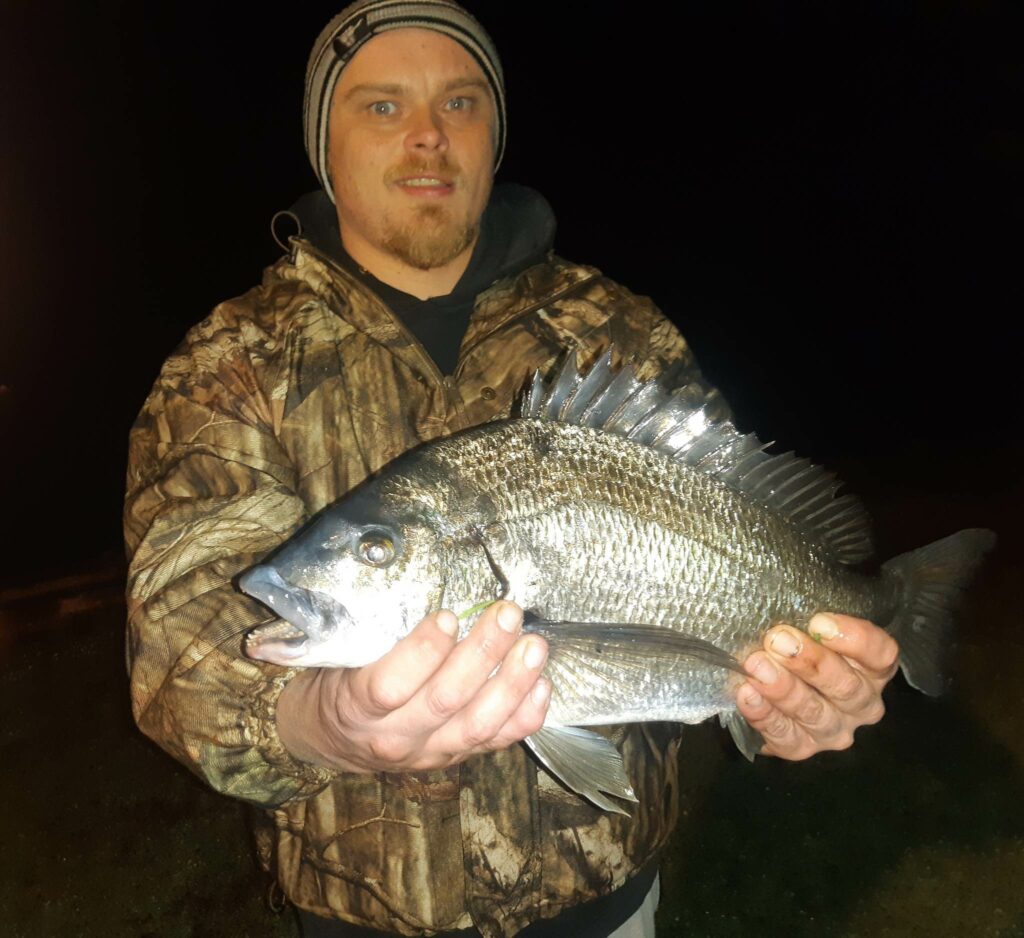30 year old Bream delivers for researchers and anglers
The importance of catch and release angling and fish tagging research has been demonstrated with a Black Bream caught in the Glenelg River with a research tag from 2012.
Black bream is a relatively slow-growing species and are highly prized by recreational anglers, but they are also an important research species, particularly in the Glenelg.
One such study carried out by a Deakin University Marine Biology student, tagged a number of fish 10 years ago, and in August this year, one of those fish was recaptured by an angler.
“What was remarkable was how slowly the fish has grown over the 10-year period,” Glenelg Hopkins CMA Senior Waterway Officer, Stephen Ryan, said.
The research tag information showed the fish was caught and tagged on 19 August 2012 in Taylors Straight, weighing 704 grams and measuring 38.6 centimetres in length.
When South Australian angler Patrick Byrne from Port MacDonnell happened to snag the tagged fish in the Glenelg in August this year, nearly 10 years to the day later, it had doubled in weight to 1.4kg but measured only 44cm in length.
“That is a growth rate of just over half a centimetre a year,” Mr Ryan said.
It is estimated that a bream takes approximately 9-to-10 years to reach the legal minimum length of 28cm to be taken by a recreational angler.
This means the bream that was caught is possibly over 30 years old and spawned sometime in the early 90’s.
While the fish was caught in August, it has taken some time to track down the original research information due to the length of time between placement of the tag and recapture.
In 2012 researchers placed acoustic tags into some of the Glenelg River black bream population to record their movement and set up listening stations at regular intervals along the river which recorded when the fish swam past.
Associate Professor Marine Ecology at Deakin University’s Warrnambool campus, Dr Daniel Ierodiaconou said Deakin University had been using tagging technologies for over a decade and this fish had an acoustic tag inserted in its gut cavity that at the time enabled researchers to understand fine scale movements and habitat preferences in the estuary.
Mr Ryan said the recapture also highlighted the importance of recreational anglers being on the waterways and collaborative work across departments and research organisations.
“These studies are important for river managers to help protect areas that bream frequently use but often that ends when a particular project finishes,” Mr Ryan said.
“What’s really great is the angler saw the tag and provided the information back to an authority – in this case SARDI because he was from South Australia – and from there, it filtered its way back to the original research source – having that support from the angler is fantastic, but also the other organisations to ensure the information gets back to where it began.”
Dr Ierodiaconou said thanks needed to be extended to the angler, Patrick Byrne, and Dr Jason Earl, Research Scientist from the South Australian Research and Development Institute (SARDI Aquatic Sciences) for providing re-capture information back to Deakin University and Glenelg Hopkins CMA.
“This is a great demonstration of the importance of citizen science and how a capture of a tagged animal can fill important knowledge gaps in growth, survivorship and animal movement,” he said.

MEDIA RELEASE: WHAT A CATCH! 30 YEAR OLD BREAM DELIVERS TO RESEARCHERS AND ANGLERS


